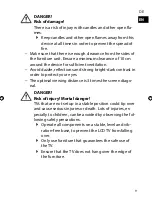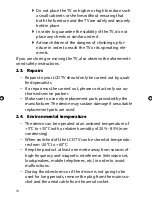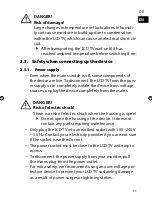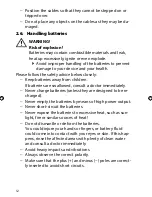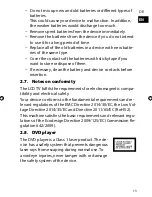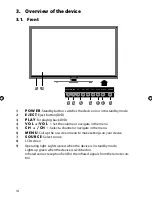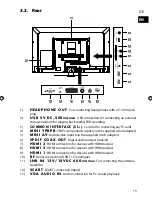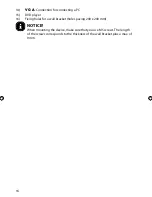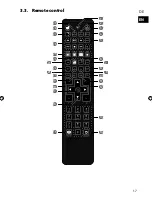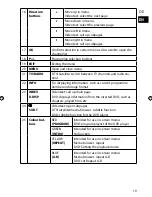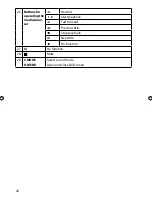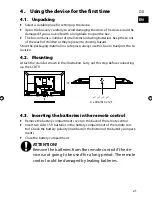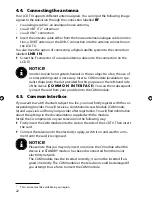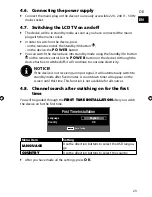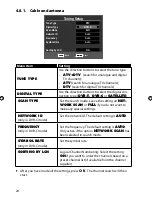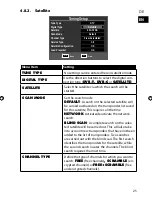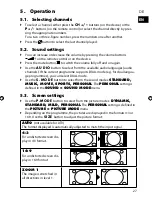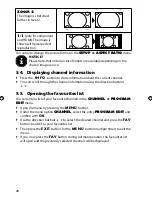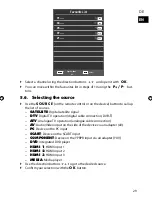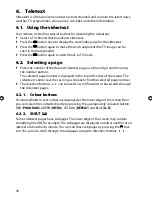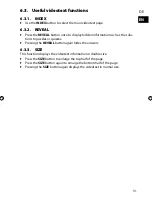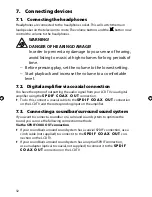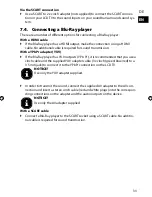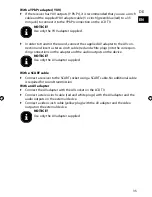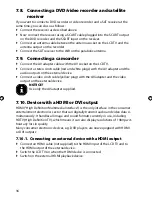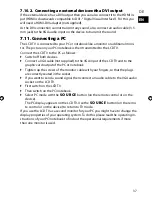
22
4.4. Connecting the antenna
Your LCD TV supports different antenna signals. You can input the following image
signals to the television through the connection labelled
R F
:
•
via analogue cable-/-an analogue house antenna,
•
via a DVB-T / T2
1
antenna or
•
via a DVB-C
1
connection
Insert the antenna cable either from the house antenna/analogue cable connec-
tion, a DVB-T antenna or the DVB-C connection into the antenna connection on
the LCD TV.
You also have the option of connecting a digital satellite system to the connection
labelled
L N B I N
.
Screw the F connector of a coaxial antenna cable onto the connection on the
LCD TV.
NOTICE!
In order to watch encrypted channels or those subject to a fee, the use of
a corresponding card is necessary. Insert a CAM module (available in spe-
cialist shops) into the slot provided for this purpose on the left-hand side
of the device (
C O M M O N I N T E R FA C E
). You can then subsequent-
ly insert the card from your provider into the CAM module.
4.5.
Common
Interface
If you want to watch channels subject to a fee, you must firstly register with the cor-
responding provider. You will receive a Conditional Access Module (CAM modu-
le) and a special card from your provider after registration. You will find information
about the settings in the documentation supplied with the module.
Install the CI components on your television in the following way:
Firstly insert the CAM module into the slot on the side of the LCD TV. Then insert
the card.
Connect the television to the electricity supply, switch it on and wait for a mo-
ment until the card is recognised.
NOTICE!
Please note that you may only insert or remove the CI module when the
device is in STANDBY mode or has been disconnected from the mains
electricity network.
The CAM module must be inserted correctly; it cannot be inserted if ali-
gned incorrectly. The CAM module or the television could be damaged if
you attempt to use force to insert the CAM module.
1
This service must be available in your region


